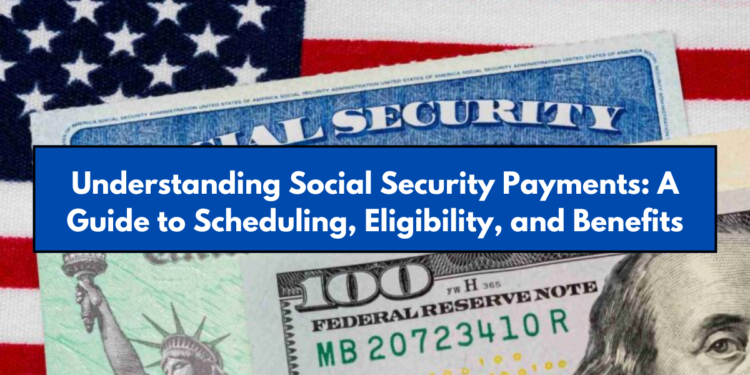Social Security payments play a crucial role in providing financial support to seniors, disabled individuals, and others who qualify under various programs. These payments often serve as a lifeline for many, helping them navigate economic difficulties and maintain their livelihoods. To ensure that beneficiaries receive their payments on time, it’s important to understand the schedule and requirements established by the Social Security Administration (SSA). This guide will break down the payment schedules, eligibility criteria, and expected benefit amounts across SSA programs.
When to Expect Your Social Security Payment
This Article Includes
The SSA operates on a nearly year-round payment schedule, distributing benefits on a weekly basis. For convenience, beneficiaries can access the annual payment schedule on the SSA website, allowing them to track their upcoming payment dates. However, it is important to carefully follow the dates and avoid confusion due to the color-coding scheme on the schedule, as misinterpretations could lead to financial delays.
The SSA divides its beneficiaries into two key groups:
- Those who began receiving benefits before May 1997.
- Those who started receiving benefits after May 1997.
Additionally, the SSA further segments beneficiaries based on their birth dates, affecting when they receive their payments each month. The payment schedule is as follows:
- SSI (Supplemental Security Income): Payments are made on the first of each month.
- Retirement Insurance, Disability Insurance, and Survivors Program: Payments are scheduled according to the beneficiary’s birthdate:
- First to Tenth: Paid on the second Wednesday of the month.
- Eleventh to Twentieth: Paid on the third Wednesday of the month.
- Twenty-First to Thirty-First: Paid on the fourth Wednesday of the month.
For example, beneficiaries under the Retirement, Survivors, and Disability Insurance (RSDI) program with birth dates between the 21st and 31st can expect their payment on Wednesday, September 25th, as part of this schedule.
Eligibility Criteria for Social Security Programs
Social Security programs have distinct requirements, and understanding these is essential for receiving benefits. Here are the key prerequisites for each program:
1. Retirement Insurance
To qualify for Retirement Insurance benefits:
- You must be at least 62 years old.
- You need to have paid Social Security taxes for a minimum of 10 years.
2. Disability Insurance
Eligibility for Disability Insurance depends on:
- A medical declaration of disability or blindness.
- You must have contributed to Social Security taxes for at least five out of the previous 10 years (this may differ for individuals younger than 24).
3. Survivors Program
The Survivors Program provides benefits to:
- Spouses, children, or economically dependent parents of the deceased worker.
4. Supplemental Security Income (SSI)
To be eligible for SSI:
- You must be 65 years or older.
- Your income must be below $1,971 per month, and your assets must total less than $2,000.
How Much Can You Expect from Social Security Payments?
The benefits amount you receive under each Social Security program varies based on your individual circumstances. However, the SSA provides average and maximum payment amounts for guidance. Here’s an overview of the payment figures for each program:
| Program | Average Amount (August 2024) | Maximum Amount |
| Retirement Insurance | $1,872.09 | $4,873 |
| Disability Insurance | $1,402.69 | $3,822 |
| Survivors | $1,509.36 | 150% to 180% of the worker’s benefit |
| SSI | $698.51 | $943 |
Each program calculates benefits differently. For example, retirement benefits depend on how much you’ve earned during your working life and how long you’ve paid into Social Security. Meanwhile, the Survivors Program pays a percentage of the worker’s benefit to dependents.
Conclusion
For many people, Social Security payments provide vital financial support. Knowing when and how these payments are made can help you better manage your finances and ensure you never miss a payment. Staying informed about the specific program you are eligible for, understanding the schedule based on your birthdate, and being aware of the payment amounts will help you navigate the SSA’s system with ease. Be sure to check the SSA website regularly for updates and resources, and don’t hesitate to reach out to SSA for assistance with your specific situation.

